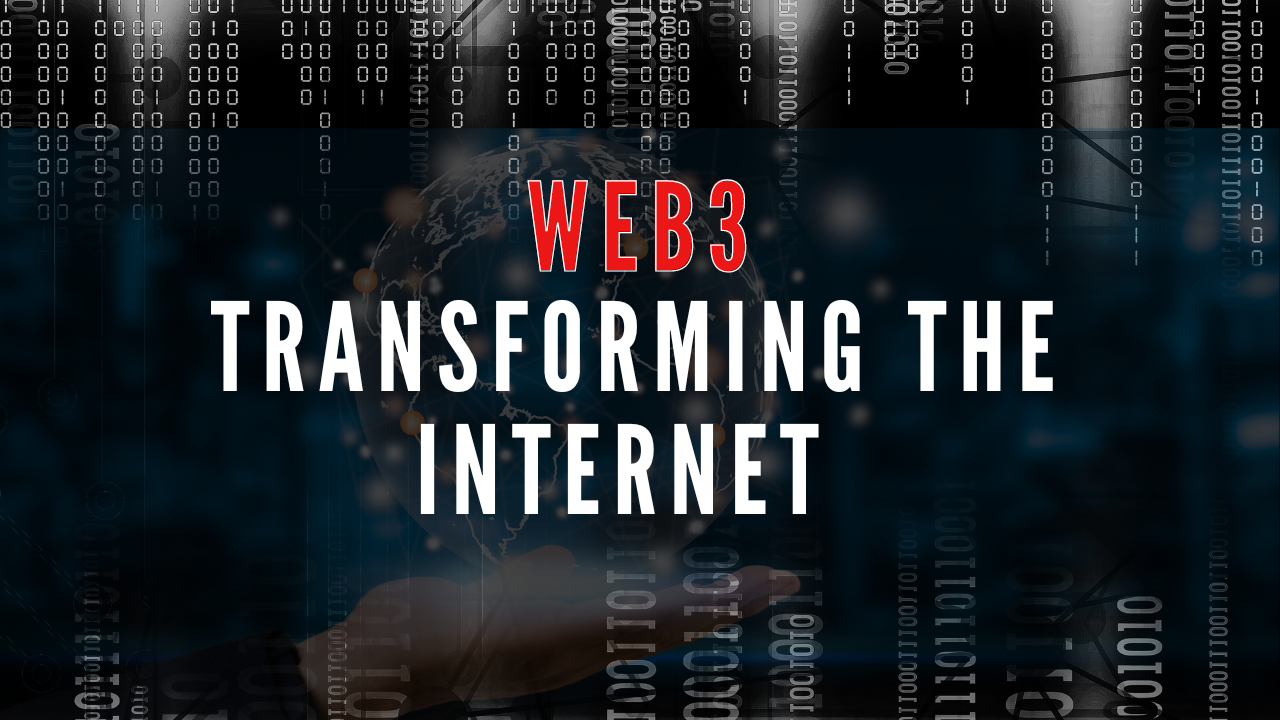How is Web 3.0 transforming the Internet?
The involvement and influence of the Internet are far more profound in our lives than it seems. It has almost all our private data and knows everything intimate about us. The implementation of this data can very well be good or bad. The personalized space is indeed convenient, but it can also turn invasive.
The domination over which the internet functions is humongous. While the first two generations of the Internet were already advanced enough, the first version was more proficient at providing information, while the latter version offered interactive platforms. More so, in the speed it is proceeding; further, it only makes our everyday living easier.
Now, the third and the latest version of the Internet is here. It is called Web 3.0 and is equipped with blockchain decentralization which revolves around improving data management. The purpose of Web 3.0 is to make data more democratic and reduce on hold of data by the giants that dominate the internet market.
The users have recognized that tech giants are profiting from their user databases. For the same, Web 3.0 now offers the freedom to choose which data they desire to share and earn out of, therefore, providing more user control over it. Another benefit of blockchain decentralization is that it is an open-source software operation that is trustless and doesn’t require a trusted mediator.
Features of Web 3.0
Blockchain and Decentralization
As mentioned above, Web 3.0 functions on blockchain technology that works to decentralize the system. This way, the tech giants do not need to act as intermediaries and grant control over user requests. The earlier versions of the Internet used a single server for data processing. On the other hand, Web 3.0 puts a decentralized system for the storage and management of data from multiple computer networks. Due to the absence of middle parties, Web 3.0 users get faster results compared to the previous versions. For example, using DeFi platforms allows making transactions without the requirement to pay high bank fees.
Semantic Web
Semantic translates to logic or language. Similarly, it allows web technology to comprehend better user queries. It further changes the web content to a structure that is easily understood by machines. It also creates a web connecting data based on their meaning. Web 3.0 will filter multiple pages and extract meaningful data to provide the best results if you search for any particular topic on the Internet.
Ubiquity
It refers to the ability to connect through different devices, platforms, and locations. Web 3.0 provides services and applications across other devices accessible from anywhere in the world—the benefits of Web 3.0 offers an advanced web experience without any limitations.
3D Graphics
Web 3.0 initiates 3D graphics for an extraordinary user experience. People have a limited attention span nowadays, thanks to the rapidly increasing technological advancement. In such cases, 3D visuals play a great role in keeping users concentrated on the Internet. Also, 3D interfaces give users an enhanced understanding of a topic. Lastly, it makes complicated data analysis easier.
Applications of Web 3.0
Decentralized Finance (DeFi)
DeFi is changing the traditional ways of financial services. Web 3.0 platforms give you a variety of executing financial experiences and transactions. Also, the need to depend on conventional methods is gone; theWeb 3.0 manages transfers of crypto funds from the wallets on its platforms.
NFTs (Nonfungible Tokens)
NFTs are bound to physical or digital resources and cannot be replaced. The property could be videos, music, memes, or any art form. Through Web 3.0, buying, selling, and creating NFTs will be simplified. In response to it, the ownership of the resources is positively impacted. Moreover, the Web hosts marketplaces that allow artists to display their talent and sell their artwork to potential NFT customers.
Decentralized Apps
Applications that operate using blockchain technology are DApps. These applications offer multi-way access to various decentralized services. It can help in buying, selling, or trading cryptocurrency. They can also be used to earn rewards from games. DApps come with inbuilt crypto wallets that offer direct transactions and store the favorite cryptos.
Cryptocurrency
The monetary aspects of Web 3.0 are based on cryptocurrency, thereby ditching traditional financial systems. Cryptocurrency can be used to purchase and sell digital assets or resources and score rewards. This form of transaction will reduce the time and cost taken by financial institutions and bypass them in no time.
Metaverse
For a high-quality internet experience, Metaverse is a crucial element of the advanced Web. Metaverse is highly engaging and interactive while it provides an immersive experience to the user where they can play games, socialize and do much more virtually. It provides the convenience of staying anonymous, and you can use augmented reality or visual reality for an enhanced visual experience.
Decentralized Autonomous Organization (DAO)
DAO is a group of people that lacks a governing body, and people tend to share a common goal or interest. These people can cast their votes for the decision-making process of the finalized ecosystem of Web 3.0, which works to treat its users democratically.
Conclusion
The Internet will witness a change and will play a vast role in changing the transformation of the Internet that occupies the world today.
Currently, the Web 3.0 infrastructure is still under the table, waiting for its launch. While many consider it popular, it might not live up to the hype. It is also a challenge whether or not the shift of the masses will be appreciated. So until its arrival, we are mysteriously waiting for the answers to several questions.
There is no other way than waiting for the future to unlock its potential.

